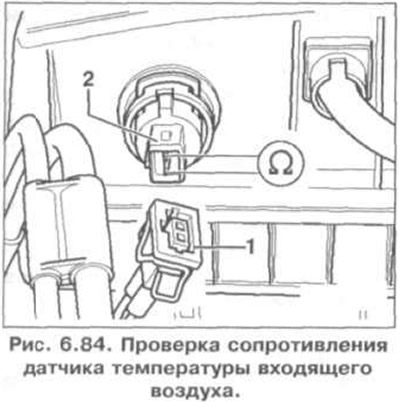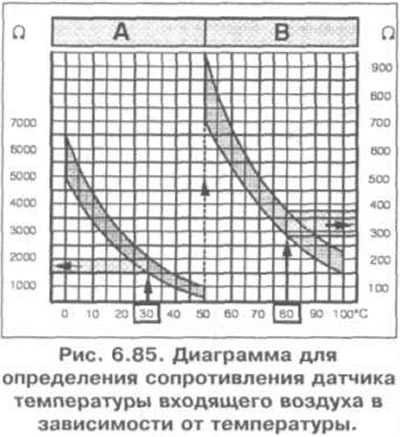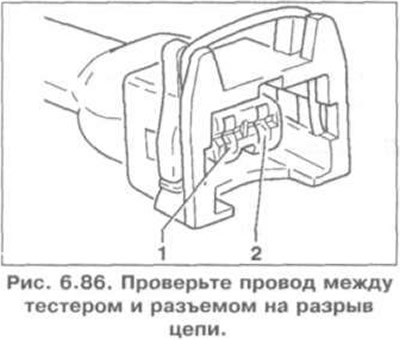2. Click «08» to select a function «Reading a block of measured values» and confirm by pressing the button «Q». The display should show the following information.
3. Click «007» to select a function «Group 7 display» and press «Q». The display should show the following information:
4. If there is no real display in field 3 or the temperature is 18.9°C or 136.8°C, check the temperature sensor and wires.
6. Click «→».
7. Click «06» to select a function «Output Completion» and confirm by pressing the button «Q».
8. Turn off the ignition.
9. Disconnect harness connector 1 from sensor 2 (pic. 6.84). Measure the resistance between the sensor contacts. The set value is shown in fig. 6.85. Area A shows resistance in the temperature range 0-50°C, area B shows resistance in the temperature range 50-100°C. For example, a temperature of 30°C corresponds to a resistance of 1500-2000 ohms; a temperature of 80°C corresponds to a resistance of 275-375 ohms.


10. If the specified value is not reached, replace the sensor.
11. If the set value is reached:
On vehicles with a 68-pin control unit wiring connector
- Connect the VAG 1598/18 tester to the engine control unit wiring harness (rice. 6.54);
- Check the wire between the tester and the connector for an open circuit; pin 1 + socket 64, pin 2 + socket 33 (pic. 6.86). Set value: 1.5 ohm;
- Additionally, check the wires for shorting one to the other, to «mass» vehicle and to the positive pole of the battery. Specification resistance: ∞ Ohm;
On vehicles with 80-pin control unit wiring connector
- Connect the VAG 1598/22 tester to the engine control unit wiring harness (rice. 6.56);
- Check the wire between the tester and the connector for an open circuit: pin 1 and slot 13, pin 2 and slot 25 (pic. 6.86). Set value: 1.5 ohm;
- Additionally, check the wires for shorting one to the other, to «mass» vehicle and to the positive pole of the battery. Specification resistance: ∞ Ohm.

For all vehicles
12. If no fault is found in the wires, replace the engine control unit.

Visitor comments